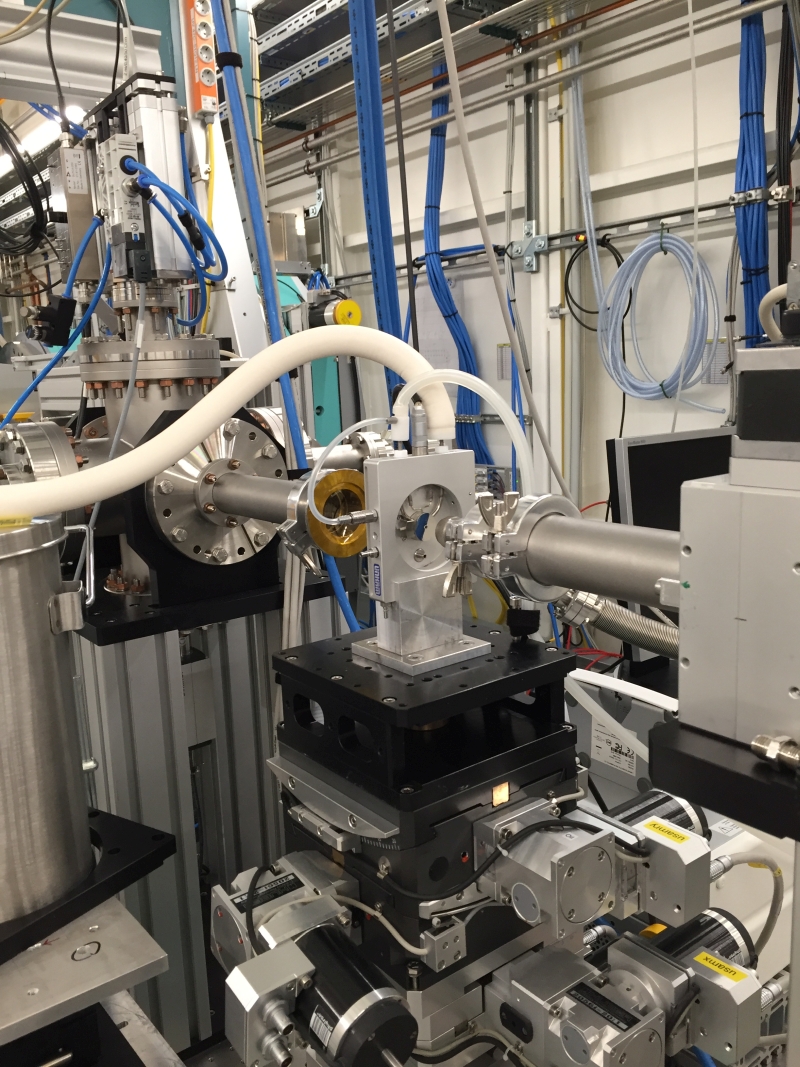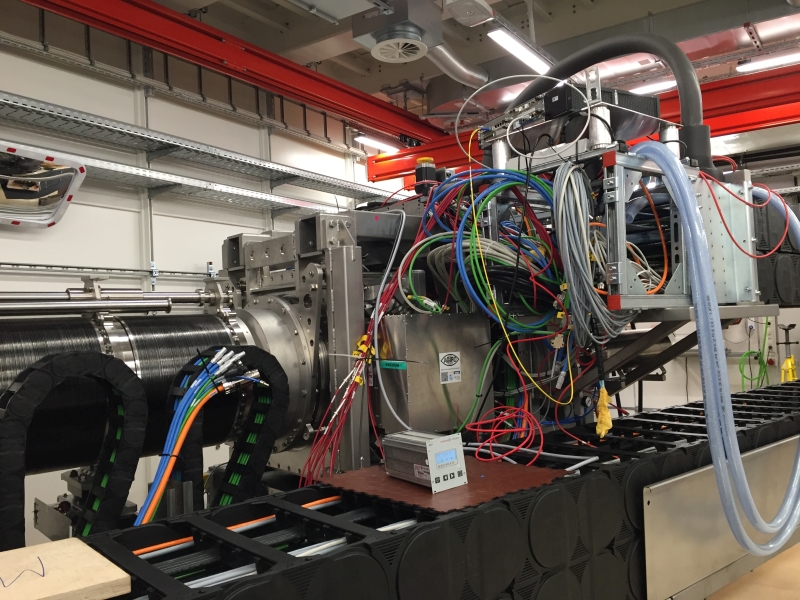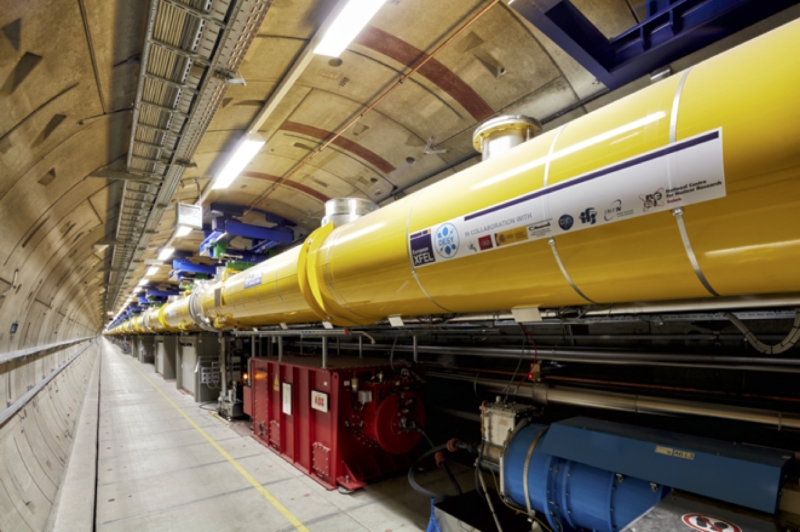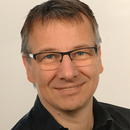Executive Department for
Press, Communication and Marketing
Adolf-Reichwein-Straße 2a Gebäude AVZ (Gebäudeteil AR-NA) 57068 Siegen
Phone: +49 (0)271/740-4915 Fax.: +49 (0)271/740-4911 E-Mail: presse@uni-siegen.de
Examining tiny protein droplets with X-ray light
Physicist Prof. Dr. Christian Gutt from the University of Siegen leads German-Swedish project.
In a German-Swedish research project, scientists from the Universities of Siegen, Tübingen, Lund, and Stockholm are studying the dynamics of proteins in cells. Their findings could form the basis for the development or improvement of medical treatments.
Biological cells are densely packed with proteins and as busy as a bazaar: space is tight and there's a lot going on. Sometimes proteins collect in larger groups – like crowds of people in front of a stall. These groupings are termed protein condensates. Understanding the formation and properties of these condensates is the goal of a German-Swedish research project due to start in June. The project is a cooperation between scientists from the Universities of Siegen, Tübingen, Lund, and Stockholm. The German Federal Ministry for Education and Research (BMBF) and the Swedish Research Council are providing support to the tune of EUR 1.7 million. The project will run for four years under the coordination of the University of Siegen.
"We've known for some years that protein groups or condensates can form in cells. But we still don't know the exact biological function of these condensates. It's a fascinating topic," says the physicist and project leader Prof. Christian Gutt of the University of Siegen. Proteins move within the dense cell plasma, doing lots of the biologically important work. Inside the cell, the finely distributed protein molecules can also condense into tiny droplets. These liquid droplets can dissolve again spontaneously, but sometimes they adopt a gel-like or even solid form which scientists suspect could trigger diseases such as Alzheimer's or Parkinson's.
Observing the formation of protein condensates: like a traffic jam on the freeway "In the project we want to determine how the proteins inside the droplets behave in such a dense environment. We'll also look at how the cell dynamics are affected by the form of the proteins. We want to know how fast the proteins move, when condensates form or dissolve again, and why the droplets sometimes become gel-like and then solid," explains Christian Gutt. The scientists hope that, once the mechanisms behind condensate formation are fully understood, it may in future be possible to influence them in a targeted way. This could enable the development of new therapies for diseases such as Alzheimer's or improve cancer treatments that use highly concentrated antibodies.
"In the project we want to determine how the proteins inside the droplets behave in such a dense environment. We'll also look at how the cell dynamics are affected by the form of the proteins. We want to know how fast the proteins move, when condensates form or dissolve again, and why the droplets sometimes become gel-like and then solid," explains Christian Gutt. The scientists hope that, once the mechanisms behind condensate formation are fully understood, it may in future be possible to influence them in a targeted way. This could enable the development of new therapies for diseases such as Alzheimer's or improve cancer treatments that use highly concentrated antibodies.
Professor Gutt explains that a major challenge is observing the underlying molecular processes. This is because the proteins in the droplets are concentrated hundreds to thousands of times more densely than in the cell plasma around them. As a result, they move much more slowly in the dense surroundings. Again, this can be compared to the crowded situation at a bazaar or to a traffic jam where cars only move at crawling pace. "So, when we study the processes inside the cell, we have to cover very different distance and time scales depending on whether we're looking at a large or small number of molecules and how fast they can move in their surroundings," explains Gutt.
Proteins are filmed in the dark and it takes about a year to evaluate a single film. The studies will be carried out at various large research facilities all over Europe. There, the molecules are filmed during the formation of the condensates under high-intensity X-ray light. This creates a molecular movie which is used for analysis of their motion. "Under normal conditions, the X-ray light would destroy the proteins. So we have to develop a method of filming them in the dark, then extracting the information we want from the resulting 'fuzzy films'", says Gutt. The second major challenge is evaluating the individual films, which consist of up to hundreds of terabytes of data. To do this, the scientists will apply the latest machine learning methods. Nevertheless, Gutt expects it to take about a year to evaluate a single film.
The studies will be carried out at various large research facilities all over Europe. There, the molecules are filmed during the formation of the condensates under high-intensity X-ray light. This creates a molecular movie which is used for analysis of their motion. "Under normal conditions, the X-ray light would destroy the proteins. So we have to develop a method of filming them in the dark, then extracting the information we want from the resulting 'fuzzy films'", says Gutt. The second major challenge is evaluating the individual films, which consist of up to hundreds of terabytes of data. To do this, the scientists will apply the latest machine learning methods. Nevertheless, Gutt expects it to take about a year to evaluate a single film.
"What fascinates me in particular is the combination of basic physics - when we examine the individual pixels of the dark films with extreme precision - and applied research with a strong link to physical chemistry and biology," explains Gutt, whose research focus is on solid-state physics. He's certain that if the evaluation of the dark films works as an analysis method, the research project will spark massive interest in the fields of biology and medicine. "There's vast potential in research into biomolecular condensates. This is such a great subject – we'll be researching it for the next 20 years!"
Contact:
Prof. Dr. Christian Gutt
Email: christian.gutt@uni-siegen.de
Tel.: ++49 (0)271 740 3741

Some of the research work will be conducted using the world's largest X-ray laser: the European XFEL in Hamburg.
(Copyright: European XFEL / Heiner Müller-Elsner)


